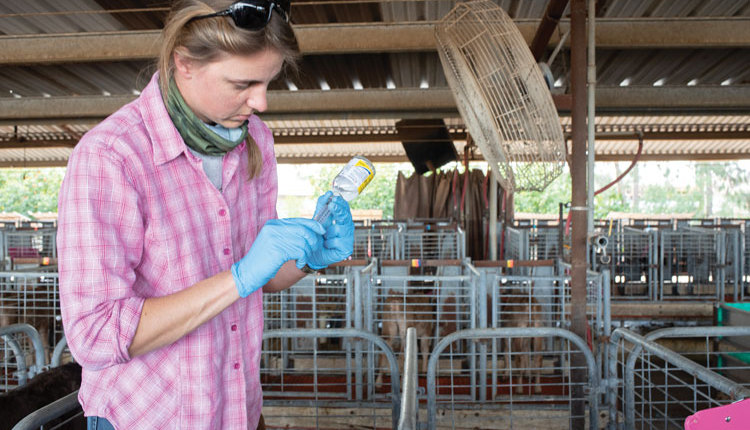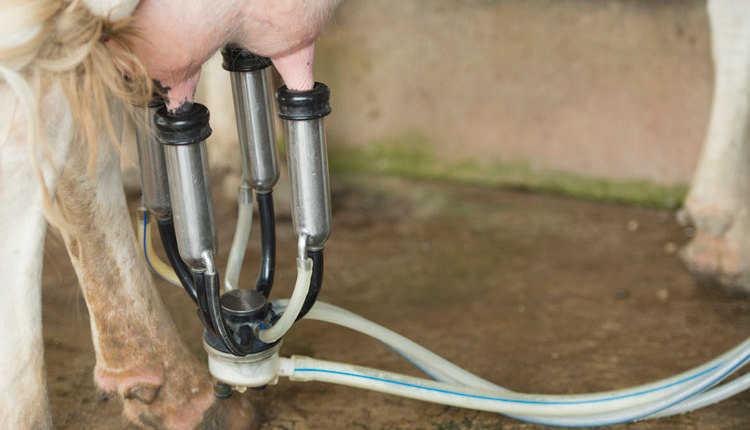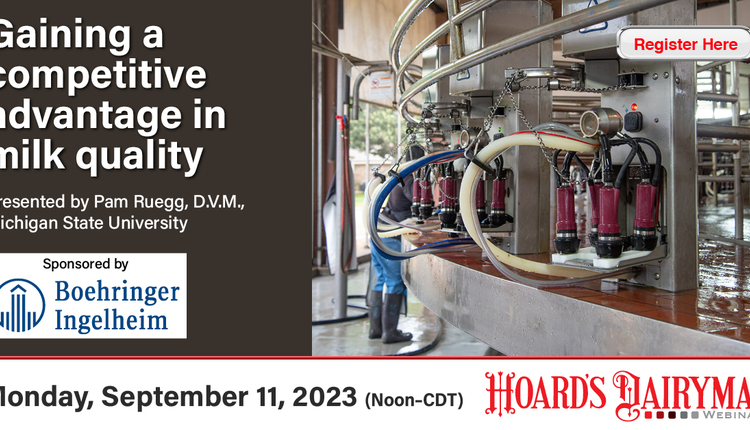The author is a milk quality specialist with the University of Wisconsin-Madison.
Now would be a good time to review common confusions on your dairy's milking procedure and determine which procedures are not based on sound science. Those not based on sound science and improved milk quality and milk flow should be eliminated.
1. Cows become addicted to oxytocin.
True and false. Addiction to oxytocin is short term. It's true that cows normally on oxytocin will hold up their milk for up to two days with no injections; however, after a couple days, milk letdown returns to normal.
2. Leaving milk in the udder causes mastitis.
False. Research shows that leaving a small amount of milk in the udder won't cause mastitis.
3. Forestripping is needed for milk letdown.
False. Forestripping really helps in mastitis detection; however, if milkers have good milking routine, stripping won't increase flow rates.
4. Forestripping slows down milking.
False. It make take time to forestrip; however, parlors that forestrip have higher throughputs.
5. Predipping must precede forestripping.
False. Research shows that what's important is to do these premilking steps; the order doesn't make a difference.
6. Lag time between stimulation and attachment of claw must be 40 to 60 seconds.
True and false. Attaching the claw prior to 40 is very bad; however, research shows that you can delay somewhat longer than 60 seconds without adverse effects.
7. Damp towels are more effective in drying teats.
False. Research consistently shows greater bacterial counts when drying with damp towels.
8. Tails make cows dirty and increase mastitis.
False. Tails can be a real pain when milking; however, extensive research shows no difference in cow cleanliness or mastitis.
9. Udder singeing reduces mastitis.
False. Like tail docking, it would seem reasonable that removing long hair from the udder would improve udder hygiene and reduce mastitis. Research does not support this except when cows are housed in very dirty conditions.
10. Teat foam works as well as liquid dip.
True. Research shows no difference in the rate of infection or the SCC when comparing foam and liquid teat disinfection.
Now would be a good time to review common confusions on your dairy's milking procedure and determine which procedures are not based on sound science. Those not based on sound science and improved milk quality and milk flow should be eliminated.
1. Cows become addicted to oxytocin.
True and false. Addiction to oxytocin is short term. It's true that cows normally on oxytocin will hold up their milk for up to two days with no injections; however, after a couple days, milk letdown returns to normal.
2. Leaving milk in the udder causes mastitis.
False. Research shows that leaving a small amount of milk in the udder won't cause mastitis.
3. Forestripping is needed for milk letdown.
False. Forestripping really helps in mastitis detection; however, if milkers have good milking routine, stripping won't increase flow rates.
4. Forestripping slows down milking.
False. It make take time to forestrip; however, parlors that forestrip have higher throughputs.
5. Predipping must precede forestripping.
False. Research shows that what's important is to do these premilking steps; the order doesn't make a difference.
6. Lag time between stimulation and attachment of claw must be 40 to 60 seconds.
True and false. Attaching the claw prior to 40 is very bad; however, research shows that you can delay somewhat longer than 60 seconds without adverse effects.
7. Damp towels are more effective in drying teats.
False. Research consistently shows greater bacterial counts when drying with damp towels.
8. Tails make cows dirty and increase mastitis.
False. Tails can be a real pain when milking; however, extensive research shows no difference in cow cleanliness or mastitis.
9. Udder singeing reduces mastitis.
False. Like tail docking, it would seem reasonable that removing long hair from the udder would improve udder hygiene and reduce mastitis. Research does not support this except when cows are housed in very dirty conditions.
10. Teat foam works as well as liquid dip.
True. Research shows no difference in the rate of infection or the SCC when comparing foam and liquid teat disinfection.










